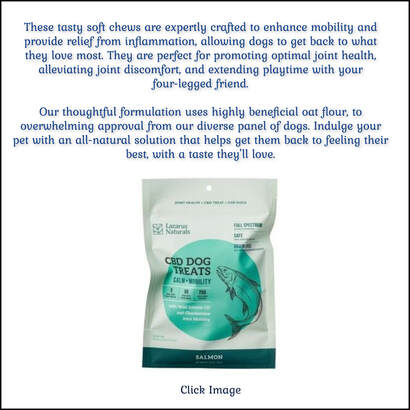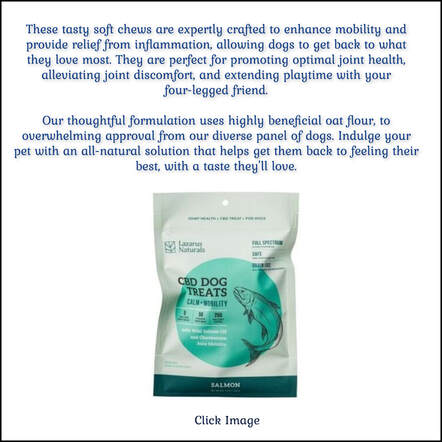By Southeast Veterinary Neurology
When a severe spinal cord injury renders a dog unable to move its legs or feel its toes, about 10-15% of dogs will go on to develop a devastating condition called myelomalacia, whether successfully treated for the initial problem or not. In this article, we’ll explain everything you need to know about myelomalacia in dogs.
WHAT IS MYELOMALACIA IN DOGS?
Myelomalacia in dogs is an unfortunate potential outcome of severe spinal cord injury. This fatal condition manifests as a rapid and progressive necrosis (death) of the spinal cord.
The spinal cord is a long band of nerve tissue fed by a system of blood vessels. Trauma to the spinal cord can cause injuries to these blood vessels, such as hemorrhaging and clogging. When normal blood flow to the spinal cord is interrupted, nerve tissue dies, causing the spinal cord to soften. Myelomalacia actually translates to “spinal cord softening.”
Softening of the spinal cord starts around the site of the injury and then progresses, moving along the entire length of the spine. Myelomalacia causes permanent paralysis in dogs and proves fatal once it reaches the part of the spinal cord that supplies nerves to the diaphragm, which controls breathing.
When a severe spinal cord injury renders a dog unable to move its legs or feel its toes, about 10-15% of dogs will go on to develop a devastating condition called myelomalacia, whether successfully treated for the initial problem or not. In this article, we’ll explain everything you need to know about myelomalacia in dogs.
WHAT IS MYELOMALACIA IN DOGS?
Myelomalacia in dogs is an unfortunate potential outcome of severe spinal cord injury. This fatal condition manifests as a rapid and progressive necrosis (death) of the spinal cord.
The spinal cord is a long band of nerve tissue fed by a system of blood vessels. Trauma to the spinal cord can cause injuries to these blood vessels, such as hemorrhaging and clogging. When normal blood flow to the spinal cord is interrupted, nerve tissue dies, causing the spinal cord to soften. Myelomalacia actually translates to “spinal cord softening.”
Softening of the spinal cord starts around the site of the injury and then progresses, moving along the entire length of the spine. Myelomalacia causes permanent paralysis in dogs and proves fatal once it reaches the part of the spinal cord that supplies nerves to the diaphragm, which controls breathing.
WHAT CAUSES MYELOMALACIA IN DOGS?
Myelomalacia in dogs is not fully understood, but it is related to spinal cord trauma, usually in the form of “grade 5” intervertebral disc disease.
The spinal cord is protected by the vertebral column. The vertebral column is composed of small bones, called vertebrae, that are connected by intervertebral discs. Intervertebral discs work as shock absorbers and allow the spine to bend. They are made up of an outer fibrous ring and an inner gel-like filling.
Intervertebral disc disease occurs when an intervertebral discs gel-like filling hardens and ruptures through its outer fibrous ring, compressing the spinal cord and affecting a dog’s ability to walk. This is commonly referred to as a ruptured, herniated, or slipped disc.
Myelomalacia in dogs is not fully understood, but it is related to spinal cord trauma, usually in the form of “grade 5” intervertebral disc disease.
The spinal cord is protected by the vertebral column. The vertebral column is composed of small bones, called vertebrae, that are connected by intervertebral discs. Intervertebral discs work as shock absorbers and allow the spine to bend. They are made up of an outer fibrous ring and an inner gel-like filling.
Intervertebral disc disease occurs when an intervertebral discs gel-like filling hardens and ruptures through its outer fibrous ring, compressing the spinal cord and affecting a dog’s ability to walk. This is commonly referred to as a ruptured, herniated, or slipped disc.
Dog being tested for myelomalacia at SEVN
Neurological symptoms caused by compression of the spinal cord are graded on a scale of 1-5. Grade 5 means a dog is unable to move or feel its legs. A dog in this condition has about a 10-15% chance of developing myelomalacia any time within a week of the initial injury, regardless of treatment.
Sadly, this chance increases to 25-30% in French bulldogs, which is one of the breeds most prone to intervertebral disc disease.
Neurological symptoms caused by compression of the spinal cord are graded on a scale of 1-5. Grade 5 means a dog is unable to move or feel its legs. A dog in this condition has about a 10-15% chance of developing myelomalacia any time within a week of the initial injury, regardless of treatment.
Sadly, this chance increases to 25-30% in French bulldogs, which is one of the breeds most prone to intervertebral disc disease.
WHAT ARE SIGNS OF MYELOMALACIA IN DOGS?
Myelomalacia in dogs is characterized by a progressive descending and ascending spinal cord softening following an acute spinal cord injury. A chain reaction of sorts first begins to affect the healthy spinal cord behind the injury, closer to the back legs and tail. Then, later in the progression of the disease, it moves forward along the spine toward the front legs. Eventually, myelomalacia will reach the diaphragm.
Signs of myelomalacia in dogs include:
Once a dog loses the ability to bear weight on its front limbs, it can lose the ability to breathe within a few days, or possibly even hours. So it is at this point that we will recommend euthanasia as the most humane thing to do.
Myelomalacia in dogs is characterized by a progressive descending and ascending spinal cord softening following an acute spinal cord injury. A chain reaction of sorts first begins to affect the healthy spinal cord behind the injury, closer to the back legs and tail. Then, later in the progression of the disease, it moves forward along the spine toward the front legs. Eventually, myelomalacia will reach the diaphragm.
Signs of myelomalacia in dogs include:
- Increasing discomfort or spinal pain
- Loss of muscle tone and reflexes in hind limbs
- Dilated anus
- Hyperthermia (higher than normal body temperature)
- Weakness or paralysis of thoracic (front) limbs
- Respiratory effort or distress due to paralysis of respiratory muscles
Once a dog loses the ability to bear weight on its front limbs, it can lose the ability to breathe within a few days, or possibly even hours. So it is at this point that we will recommend euthanasia as the most humane thing to do.
HOW IS MYELOMALACIA IN DOGS DIAGNOSED?
The truth is that MRI can suggest myelomalacia in dogs, but is only correct in identifying it in some cases. Myelomalacia is a concern for any dog with a grade 5 spinal cord injury. Even with the most appropriate and aggressive medical and surgical treatments, 10-15% of dogs will still go on to develop myelomalacia within a week after the initial spinal cord trauma.
The fact that this condition cannot be accurately predicted is frustrating, to say the least. In order to provide a grade 5 dog with the best chance of walking again after a compressive injury, such as a ruptured disc, surgery must be performed right away. However, there is always a chance that myelomalacia will develop over the next few days, and sadly, humane euthanasia will be recommended for the patient anyway.
On the other hand, if we were to wait a week to see whether or not myelomalacia will occur, we would lose the time advantage that is critical to successful surgical treatment of the much larger percentage of dogs that will not develop myelomalacia.
The truth is that MRI can suggest myelomalacia in dogs, but is only correct in identifying it in some cases. Myelomalacia is a concern for any dog with a grade 5 spinal cord injury. Even with the most appropriate and aggressive medical and surgical treatments, 10-15% of dogs will still go on to develop myelomalacia within a week after the initial spinal cord trauma.
The fact that this condition cannot be accurately predicted is frustrating, to say the least. In order to provide a grade 5 dog with the best chance of walking again after a compressive injury, such as a ruptured disc, surgery must be performed right away. However, there is always a chance that myelomalacia will develop over the next few days, and sadly, humane euthanasia will be recommended for the patient anyway.
On the other hand, if we were to wait a week to see whether or not myelomalacia will occur, we would lose the time advantage that is critical to successful surgical treatment of the much larger percentage of dogs that will not develop myelomalacia.
HOW IS MYELOMALACIA IN DOGS TREATED?
Unfortunately, there is no way to predict, prevent, or treat myelomalacia in dogs at this time.
It is possible that myelomalacia can start and then stop, but frankly, the most realistic scenario is that it will not stop until pet parents are ultimately faced with the decision to humanely euthanize their beloved dog. In rare cases, myelomalacia does not progress significantly after it starts, but these patients remain permanently paralyzed.
“Myelomalacia is tragic and unpredictable. It is absolutely heartbreaking to witness any patient suffer from this painful condition. Although we do everything possible to prevent myelomalacia from developing, sometimes our efforts are futile. When myelomalacia does not stop progressing, we become obliged to recommend a peaceful and pain-free passing for the pet,” explains Dr. Christine Senneca, Veterinary Neurologist at Southeast Veterinary Neurology.
Unfortunately, there is no way to predict, prevent, or treat myelomalacia in dogs at this time.
It is possible that myelomalacia can start and then stop, but frankly, the most realistic scenario is that it will not stop until pet parents are ultimately faced with the decision to humanely euthanize their beloved dog. In rare cases, myelomalacia does not progress significantly after it starts, but these patients remain permanently paralyzed.
“Myelomalacia is tragic and unpredictable. It is absolutely heartbreaking to witness any patient suffer from this painful condition. Although we do everything possible to prevent myelomalacia from developing, sometimes our efforts are futile. When myelomalacia does not stop progressing, we become obliged to recommend a peaceful and pain-free passing for the pet,” explains Dr. Christine Senneca, Veterinary Neurologist at Southeast Veterinary Neurology.
**Canine Arthritis And Joint is intended for informational, educational and entertainment purposes only and is not a substitute for medical advice, diagnosis or treatment. Do not attempt to self-diagnose or treat any health condition. You should always consult with a healthcare professional before starting any diet, exercise or supplementation program, before taking any medication, or if you have or suspect your pet might have a health problem. The opinions expressed by Canine Arthritis And Joint are not to be replaced for medical care. This website and the information contained herein have not been evaluated by the Food and Drug Administration. The information and opinions on Canine Arthritis And Joint are not intended and cannot be used to diagnose, treat, cure, or prevent any disease. This applies to people and pets!
This site uses affiliate links such as banners you may see that allows for paid commissions.
This site uses affiliate links such as banners you may see that allows for paid commissions.
Canine Arthritis And Joint © Copyright 2015-2024
Designed By Paw Prints Web Design
Designed By Paw Prints Web Design











